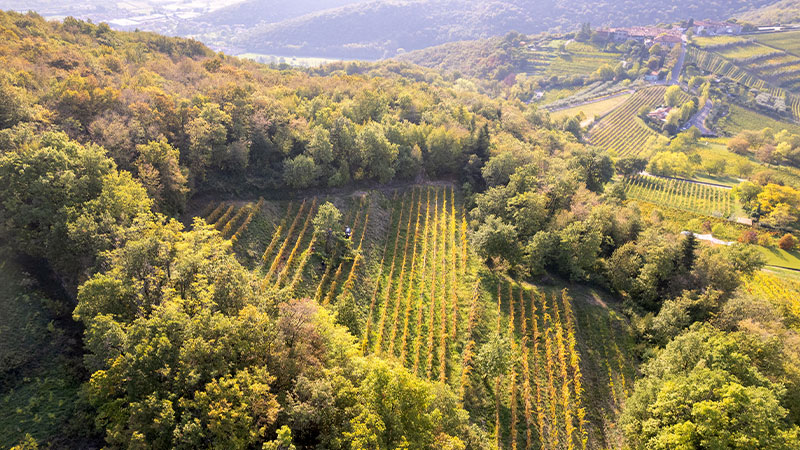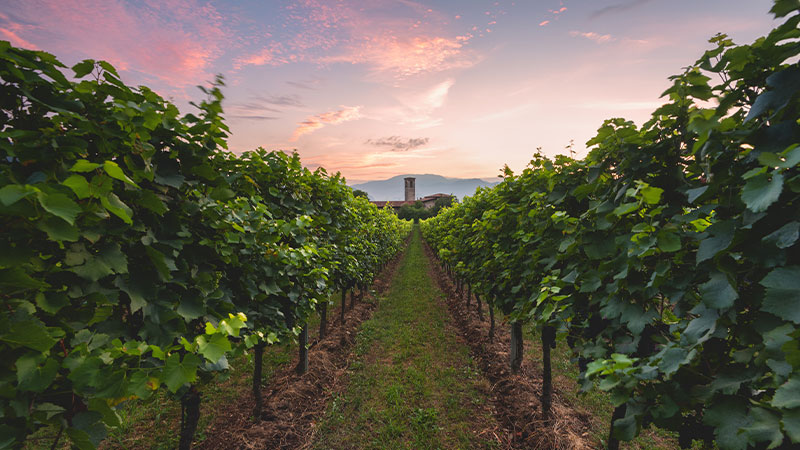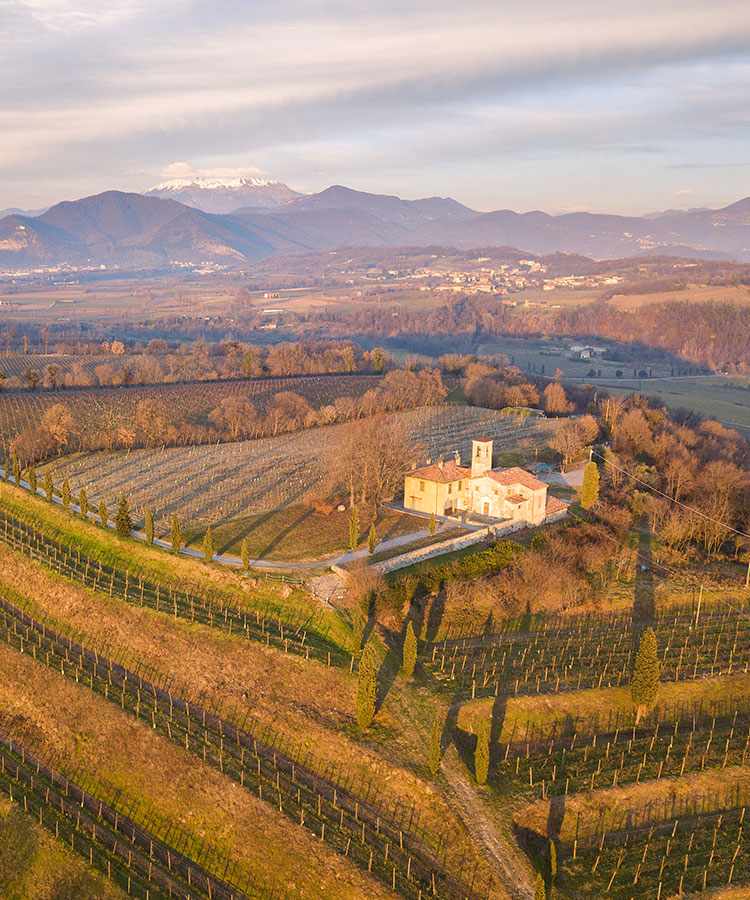
You’ve heard of Franciacorta and perhaps had the pleasure of sipping the region’s stellar sparkling and still wines. If especially lucky, you’ve even visited the place, stealing away on a day trip from the nearby city of Milan. Whether a longtime devotee of Franciacorta or learning about it for the first time, prepare to see the place with fresh eyes.

Renowned cartographer and journalist Alessandro Masnaghetti has spent the past three years meticulously plotting Franciacorta in fine detail, identifying 134 zones for land variation, history, and traditions. His new Franciacorta Vineyard and Zone Map charts the region in an accessible way, inviting curious explorers to renew their appreciation for this part of Italy.
Masnaghetti’s map both defines an evolving wine region and helps its rapidly growing audience understand a multifaceted part of the world. Turns out, a good map can not only help you know a place and its people; it can also help you find your next favorite bottle.
Destination: Franciacorta
To explore Franciacorta, start by locating Milan, which sits in the region of Lombardy in northern Italy. Lombardy boasts an extraordinarily rich history: its denizens have included Pliny the Elder, Leonardo da Vinci, Caravaggio, and (more recently) Miuccia Prada. Of 58 UNESCO Heritage Sites in Italy, ten are here.
Within Lombardy, south of the Alps along the shore of Lake Iseo, lies the province of Brescia; nested there is the region of Franciacorta.
A Brief History of Franciacorta
With an area of approximately 50,000 acres — only 7,000 of which are planted to vine — Franciacorta is home to a wide variety of soils. Many of these soils share common traits: they are primarily morainic, meaning they include material left behind by a moving glacier. Morainic soils are typically moderate in depth, with good drainage and a high water reserve, and are absolutely ideal for growing grapes. Though Franciacorta’s flavor varies, one can expect delicately ripe notes of green apple, cherry, white flowers, almond, and toasted hazelnut.

The ancients — in this case, the monks responsible for settling the region — must have known this instinctively because winemaking in Franciacorta has been recorded for centuries. In the past, though, Bordeaux and Burgundian styles dominated, with wines typically heavily aged in oak. That changed dramatically in the 1960s, and Franciacorta wines have skyrocketed in popularity ever since.
The Magic Touch
What marked the turning point? As the story goes, a winemaker named Guido Berlucchi was making a batch of Pinot Bianco and having a bit of trouble. He called his comrade, consulting winemaker Franco Ziliani, who suggested adding sparkle to the wine. At the time, almost all the wine in the region was still — no bubbles.
The resulting sparkling wine was so popular that it resulted in several copycat versions. All were (and are) made in the traditional method, the same process used for Champagne, with tirage taking place inside the bottle. Yet the wines are made with locally appropriate grapes: Chardonnay, Pinot Nero (a.k.a. Pinot Noir), and Pinot Bianco.
By the 1980s, leaders in the region began to create rules governing the local production of sparkling and other wines. By 1995, those rules became fairly strict, which surely challenged winemakers while setting a very high standard for quality. For example, grapes must be hand-harvested between certain dates and are subject to specific yield limitations. Depending on the style of wine, it might spend a certain number of months on the lees, some of which might be in the bottle.
Such standards — and the prime opportunity to help define an emerging wine region — are largely what drove Masnaghetti to create the new map. Previously, no known attempt was made to officially classify and document Franciacorta’s varied landscape.
Taste the Future of Franciacorta
While Franciacorta is a young and still-evolving place, its wines have made an unmistakable impact on the global wine scene. In fact, the wines are so influential that they’ve served as the official sparkling wine at the acclaimed Emmy Awards for three years and counting.
Franciacorta is a region of primarily family-run wineries committed to quality, sustainability, and biodiversity; 55 percent of its vineyards are certified organic. With 20 million bottles sold annually, at the moment only 12 percent is exported, so only a little makes its way to the U.S. When you find a bottle, consider it your opportunity to explore the region through your palate.
Intrigued? There is no shortage of opportunities to learn more about Franciacorta: Franciacorta Week will take place at select restaurants from June 1 to 15 in Miami, Chicago, and New York City. Select restaurants throughout these cities will offer special promotional programs such as by-the-glass offerings and unique educational opportunities. To find a restaurant near you and get in on the Franciacorta action, click here.
This article is sponsored by Franciacorta DOCG.

